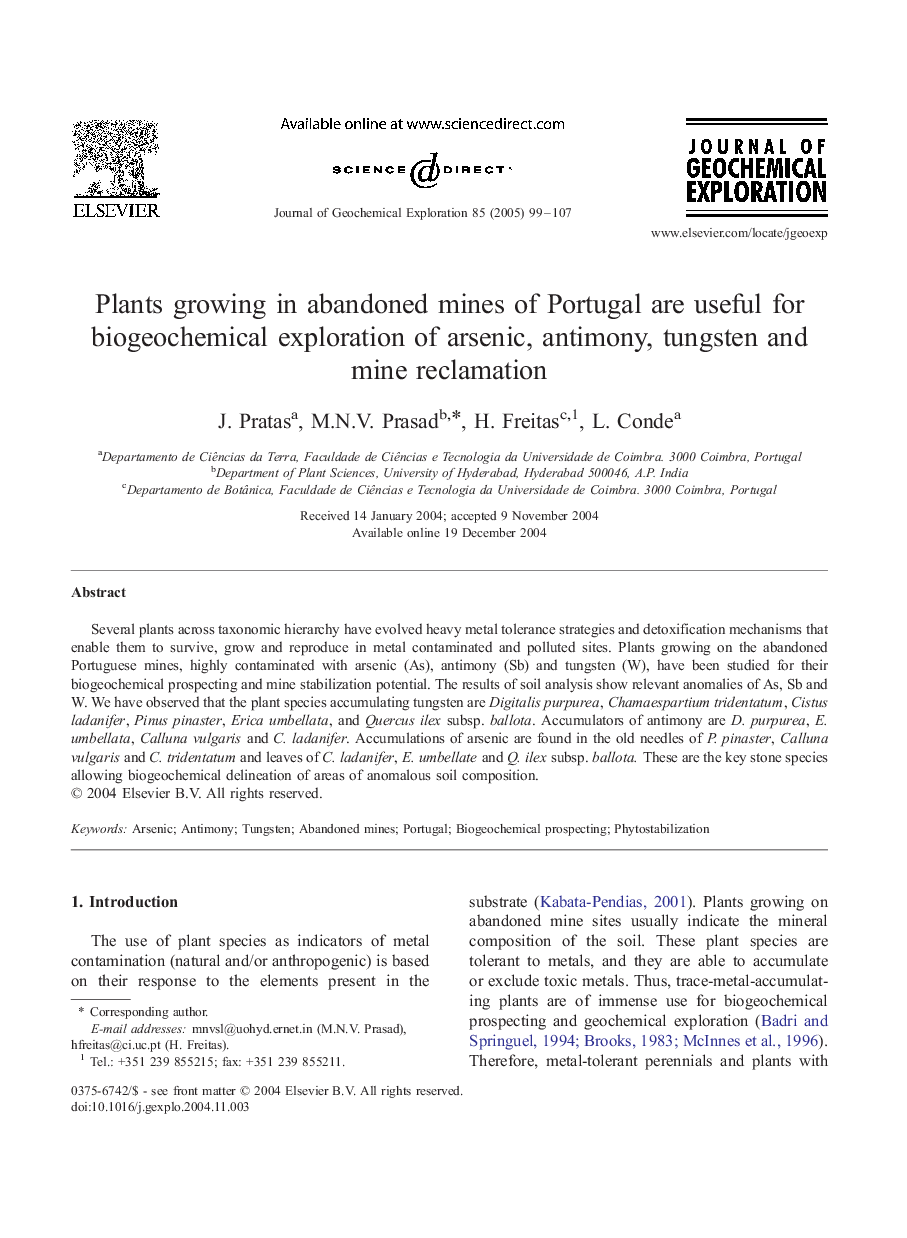| Article ID | Journal | Published Year | Pages | File Type |
|---|---|---|---|---|
| 9461151 | Journal of Geochemical Exploration | 2005 | 9 Pages |
Abstract
Several plants across taxonomic hierarchy have evolved heavy metal tolerance strategies and detoxification mechanisms that enable them to survive, grow and reproduce in metal contaminated and polluted sites. Plants growing on the abandoned Portuguese mines, highly contaminated with arsenic (As), antimony (Sb) and tungsten (W), have been studied for their biogeochemical prospecting and mine stabilization potential. The results of soil analysis show relevant anomalies of As, Sb and W. We have observed that the plant species accumulating tungsten are Digitalis purpurea, Chamaespartium tridentatum, Cistus ladanifer, Pinus pinaster, Erica umbellata, and Quercus ilex subsp. ballota. Accumulators of antimony are D. purpurea, E. umbellata, Calluna vulgaris and C. ladanifer. Accumulations of arsenic are found in the old needles of P. pinaster, Calluna vulgaris and C. tridentatum and leaves of C. ladanifer, E. umbellate and Q. ilex subsp. ballota. These are the key stone species allowing biogeochemical delineation of areas of anomalous soil composition.
Related Topics
Physical Sciences and Engineering
Earth and Planetary Sciences
Economic Geology
Authors
J. Pratas, M.N.V. Prasad, H. Freitas, L. Conde,
